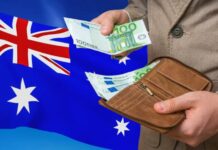The week starts on a mixed sentiment. The equity markets quickly got over last week’s inflation shocker from the US. Nasdaq rebounded as fast as it dived, as investors didn’t find a much better alternative to the stocks for hedging against inflation, while gold coughed to life, as the yellow metal flirted with $1870 an ounce for the first time in five months.
Activity on equity futures point at a flat start to the week.
The better-than-expected industrial output from China, and rising hopes that the upcoming US-China meeting would lead to some positive news for international trade keeps investors cautiously optimistic this Monday.
But inflation remains on the back of every investor’s mind, as the Europeans and the Brits will be revealing their latest inflation figures this week, and following the blow number from the US last week, traders are not walking into the European inflation data light-hearted.
While inflation in the Eurozone is expected to have stabilized near 4.1% in October, the consumer price index in Britain is seen jumping to 3.9% from 3.1% printed a month earlier.
What’s important is not the numbers per se, but these numbers’ potential of boosting the hawkish expectations. For the Eurozone, Christine Lagarde is fighting back inflation by playing it down, acting as it doesn’t exist and as it won’t impact the policy decisions. Therefore, the chances are that we continue seeing the single currency extending losses against the US dollar.
The Bank of England (BoE), on the other hand, at least reckons that there is a rising inflation problem that needs to be addressed, but they don’t want to address it. Still, activity on MPC Sonia futures points at a 67% chance of a rate hike in December in the UK. Therefore, a strong inflation figure could come to strengthen the hawks’ hands and could give a boost to the pound at the current levels.
However, even the BoE hawks could find it hard to fight back the prospects of a strengthening US dollar moving forward. The US dollar index is at a year-high levels, and has room to extend gains for three major reasons. One, the rising inflation is boosting the hawkish Federal Reserve (Fed) expectations, and could lead to earlier and a steeper rate normalization path in the US. Second, the slowing global growth is less good for the export-oriented economies like the Eurozone and Japan, which according to UBS exports 29% and 18% of their GDP, versus only 12% for the US. And third, the US dollar should benefit from rising real rates as a result of a tighter interest rate policy from the Fed, given that the Fed is expected to act earlier than its major peers.












